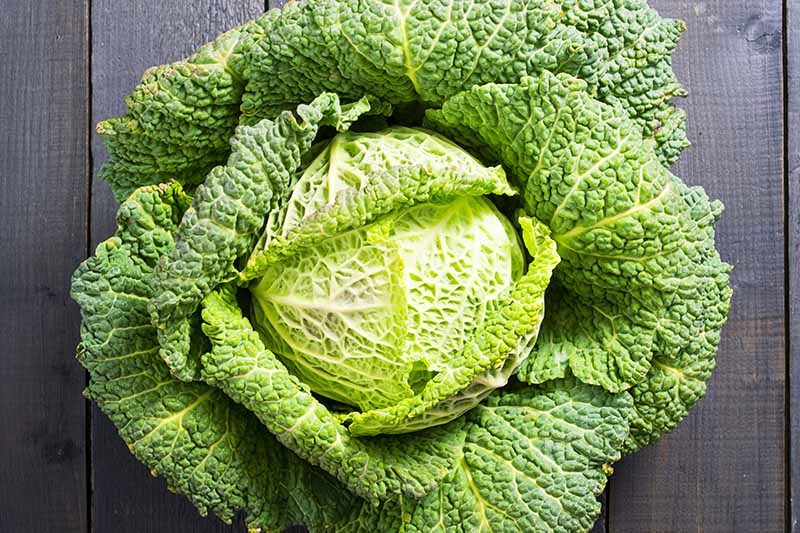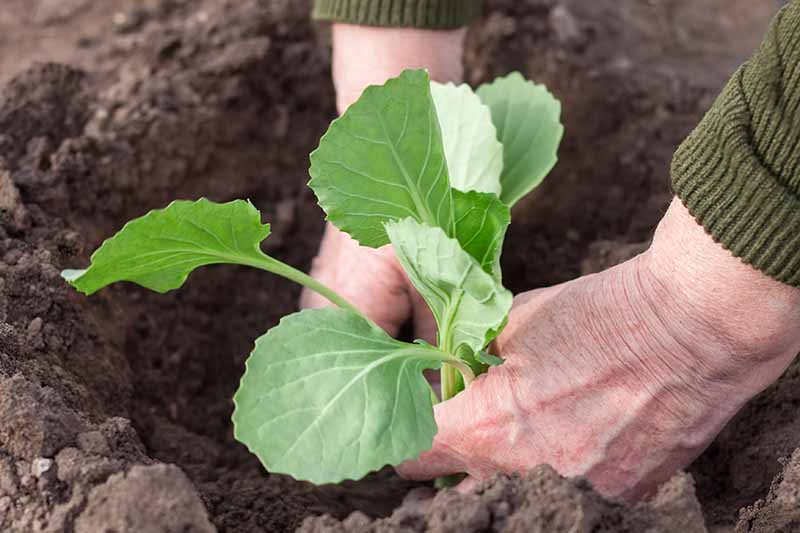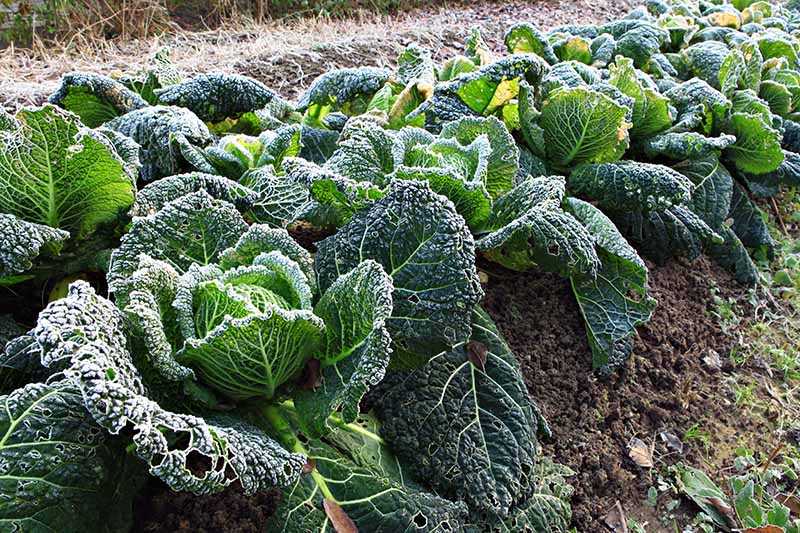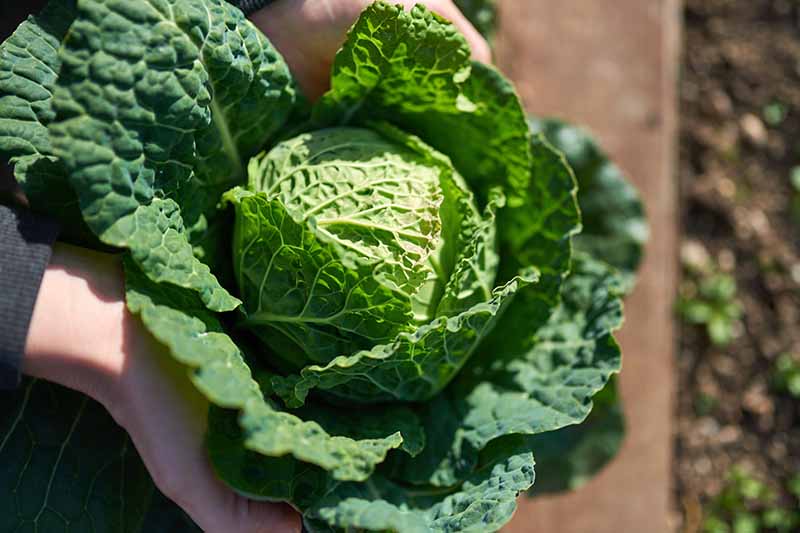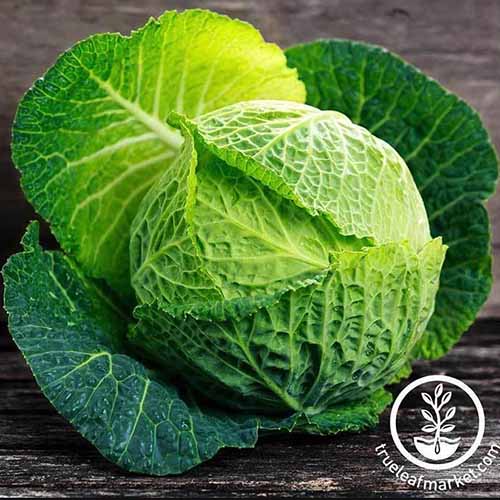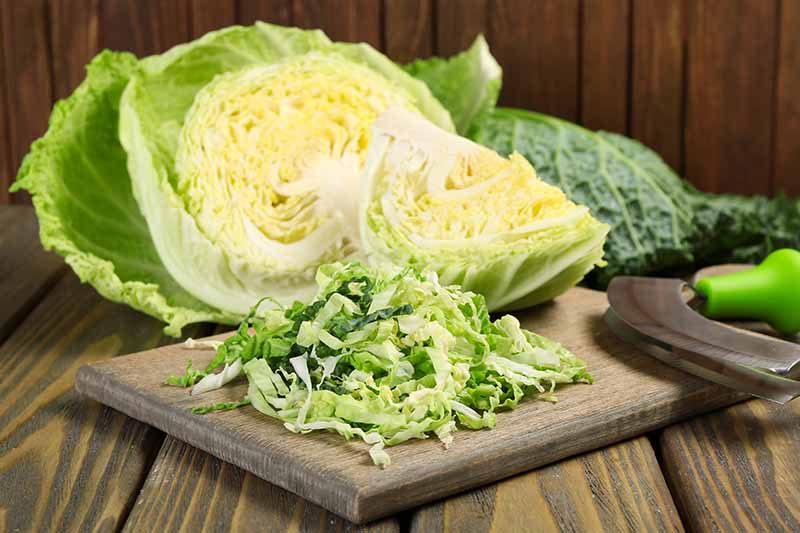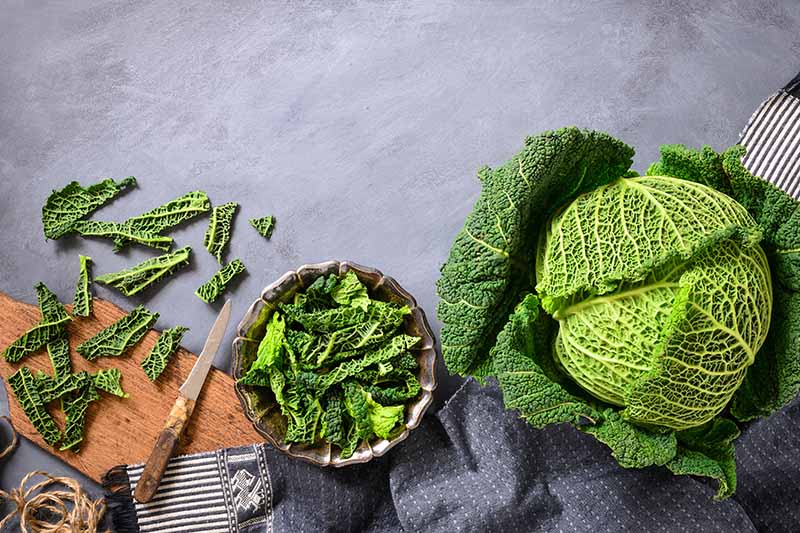This is a shame, since it’s my favorite variety! With crinkly green leaves, it adds beauty to the garden, and a unique texture in the kitchen. We link to vendors to help you find relevant products. If you buy from one of our links, we may earn a commission. Let’s dig into the details!
What Is Savoy Cabbage?
Savoy cabbage, like all other cabbage varieties is a specific cultivar of Brassica oleracea. The wrinkly leaves have a milder flavor and a lighter texture than the more traditional green cabbage that many of us are used to.
According to Texas A&M University, the name savoy comes from the historical Savoy region of the Western Alps in parts of what is now Italy, France, and Switzerland.
When and How to Plant
As with other varieties of cabbage, savoy doesn’t do well in hot weather. Therefore, it can be grown once in the spring, and again in the fall.
In the spring, you should aim to get transplants in the ground immediately after your last frost. This gives plants time to fully develop before it becomes too hot. Start seeds five or six weeks before your expected last frost date. In the fall, crops should be transplanted in late July to mid-September. Those in colder regions should transplant earlier, while those in warmer regions can transplant later. Seeds for transplants should be started in late June to early August, depending on when you want to plant. No matter when you plant, choose a site with full sun and good drainage. Plant seedlings 12-18 inches apart in rows 18-24 inches apart.
This crop can also be direct seeded, but it will take up space in your garden for a longer period of time. Direct seed in July and August for zones one through six and in August and September for zones seven through ten. To direct seed crops, plant seeds four inches apart in rows 18-24 inches apart. When the seedlings are two inches tall, thin to 12-18 inches apart. You can also grow Savoy cabbage in containers. For one plant per container, choose a pot that is at least 12 inches in diameter and 12 inches deep. If planting more than one cabbage per container, space plants 12 inches apart.
Crop Management
The light and water requirements for savoy cabbage is the same as other cabbages. It does best in full sun and requires one inch of water per week. Savoy cabbage is susceptible to many of the pests that attack other brassicas. These include cabbage worms, flea beetles, slugs, and cutworms.
One way to protect your plants from these pests is to practice crop rotation. Do your best to avoid planting brassicas – think cabbages, kale, and collards – in the same area two years in a row. Rotating crops helps break the pests’ life cycle. When juveniles emerge in the spring, they don’t have their preferred host plant to feed on, so they die or move on. Floating row covers physically exclude flying pests from your crops. They work best if you put them on before insect populations get too high, so scout your crop a few times a week to check for early signs of pests such as eggs or recently arrived adults. Better yet, apply these covers when the plants are still small and before the insects have appeared.
How to Harvest
Savoy cabbage heads will be ready to harvest 70 to 110 days after planting seeds, depending on the variety. Check your seed packet to see when your variety will be ready. While heads should be compact, this variety does have a little more give than others. When you touch a mature cabbage, don’t be surprised if it feels squishy. However, if you can push the cabbage inwards more than a quarter of an inch, it needs more time to mature.
To harvest the cabbage, simply cut the stem near ground level. After removing any discolored leaves, store in the crisper drawer of your refrigerator for up to a month.
Recipes and Cooking Ideas
One of my favorite ways to cook savoy cabbage is in haluski – a Polish dish of butter, onions, cabbage, and noodles.
Savoy Perfection
This heirloom cultivar can be grown in Zones 3-12. It is ready in 90 days and produces sweet, green heads that are five to seven inches across.
‘Savoy Perfection’ You can find ‘Savoy Perfection’ seeds in a variety of quantities at True Leaf Market.
January King
This heirloom cultivar produces striking purple and green heads. These heads are semi-savoy, which means they have slightly less crinkled leaves. ‘January King’ As its name suggests, this type does well in the cold and can survive winter in Zones 7 and above. Expect to harvest three- to five-pound heads 150-210 days after planting.
Savoy King
‘Savoy King’ is a hybrid that produces medium-sized dark green heads that are pale yellow at the core. A vigorous, high-yielding variety, it is ready to harvest after 80 days. ‘Savoy King’
Famosa
With dark green heads that turn blue-green in colder weather, ‘Famosa’ will make a beautiful addition to your garden. It produces two- to four-pound heads with excellent flavor. ‘Famosa’ is a hybrid variety that is ready to harvest in 70-85 days.
For a quick preparation, saute one chopped onion and a head of thinly sliced cabbage in butter until soft. Meanwhile, cook egg noodles according to package directions. Toss the noodles with the vegetables for a comforting cool-weather dish. Nutritious savoy cabbage is also great in slaws such as this cabbage and pea sprout salad with Asian-inspired dressing from our sister site, Foodal.
The Crinkle Crunch Cabbage
After reading this, I hope you’re ready to try planting some savoy cabbage.
The crinkly leaves provide a fun twist on the traditional green cabbage. And the sweet taste and crunchy texture make for a versatile ingredient in the kitchen. Let us know in the comments if you’ve had success growing this crunchy fresh vegetable in your garden. And if you’re looking to learn more about lesser-known fall crops, check out the following:
How to Grow Collard Greens, A Taste of Southern Culture How to Grow and Plant Daikon: Add Some Zing to Your Garden How to Grow Sweet and Tender Red Russian Kale


